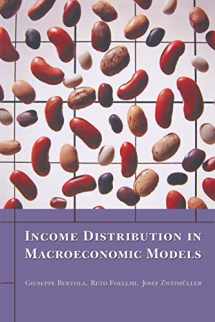
Income Distribution in Macroeconomic Models
Book details
Summary
Description
This book looks at the distribution of income and wealth and the effects that this has on the macroeconomy, and vice versa. Is a more equal distribution of income beneficial or harmful for macroeconomic growth, and how does the distribution of wealth evolve in a market economy? Taking stock of results and methods developed in the context of the 1990s revival of growth theory, the authors focus on capital accumulation and long-run growth. They show how rigorous, optimization-based technical tools can be applied, beyond the representative-agent framework of analysis, to account for realistic market imperfections and for political-economic interactions.
The treatment is thorough, yet accessible to students and nonspecialist economists, and it offers specialist readers a wide-ranging and innovative treatment of an increasingly important research field. The book follows a single analytical thread through a series of different growth models, allowing readers to appreciate their structure and crucial assumptions. This is particularly useful at a time when the literature on income distribution and growth has developed quickly and in several different directions, becoming difficult to overview.


We would LOVE it if you could help us and other readers by reviewing the book
Book review



